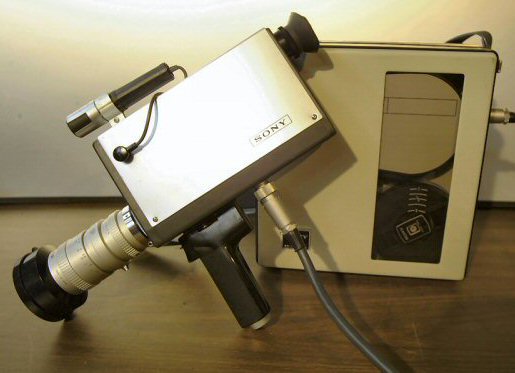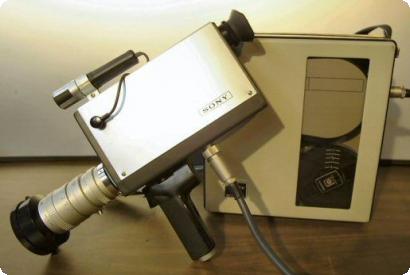Please wait a few moments while we process your request

Vidéographe
(Montreal, Quebec, Canada)
Vidéographe, one of the first video access centres in North America, was founded by Robert Forget, a filmmaker working at the National Film Board of Canada (NFB) in the Educational Film Department and a producer with the Groupe de recherches sociales (GRS) and Challenge for Change in the 1960s and 1970s.
In 1967, Forget became one of the first Canadians to acquire a Portapack (1) and began actively exploring the possibilities of the video recorder. Aware of the potential of video for artists and the general public, he committed himself to founding a video production centre. After several administrative stalls at the NFB, Vidéographe officially opened the doors of its own space on Saint-Denis Street in Montreal, Quebec, in 1971. In 1973, it was incorporated as an independent non-profit organization.
Vidéographe's original mandate was to investigate three hypotheses: "citizens have something to say; video can give them the means; and there is a public for video." (2) Vidéographe began to set up production and distribution programs and to present screenings of its own productions. Currently, Vidéographe has three main departments that continue to promote these original principles.
Espace Vidéographe is a physical gallery space that was officially launched in 1998. It showcases works that incorporate moving image and sound in various media. In 2000, Espace Vidéographe expanded its activities to encompass off-site presentations in diverse locations around Montreal, including bars and other public places. Soundpool: The Manufacturing of Silence, an audio art project by Steve Heimbecker (September 2001), Corps Exilé, a video installation by Chantal Gervais (November 2001), and L'invention des animaux, a solo exhibition of video and audio work by Jocelyn Robert (January 2002), have been presented at the gallery.
Vidéographe's distribution department promotes local, national and international artists through such services as Le Club (home rental of videotapes in its collection) and on-line access to its catalogue of over 1,100 titles. Vidéographe also works actively with other distribution centres around the world, developing exchange programs and special screenings.
And finally, Vidéographe has a busy production department that offers its members many programs, workshops and technical services to facilitate their access to technology and expand their knowledge. The centre provides artist-residency programs, co-production possibilities, and aid for research and experimentation. Vidéographe has set up a new research and development group called Vitamin Beziehungen. This group, directed by artist and professor Jean Décarie, communications professor Louis-Claude Paquin, and Vidéographe's Marc Fournel, explores issues surrounding cybernetics and its artistic applications. Once a month, the group holds an open forum where artists can come discuss their own work and the work of others in relation to cybernetics. In addition, the group developed a residency program for artists working in cybernetics. This program has been supported by the Daniel Langlois Foundation.
In 1967, Forget became one of the first Canadians to acquire a Portapack (1) and began actively exploring the possibilities of the video recorder. Aware of the potential of video for artists and the general public, he committed himself to founding a video production centre. After several administrative stalls at the NFB, Vidéographe officially opened the doors of its own space on Saint-Denis Street in Montreal, Quebec, in 1971. In 1973, it was incorporated as an independent non-profit organization.
Vidéographe's original mandate was to investigate three hypotheses: "citizens have something to say; video can give them the means; and there is a public for video." (2) Vidéographe began to set up production and distribution programs and to present screenings of its own productions. Currently, Vidéographe has three main departments that continue to promote these original principles.
Espace Vidéographe is a physical gallery space that was officially launched in 1998. It showcases works that incorporate moving image and sound in various media. In 2000, Espace Vidéographe expanded its activities to encompass off-site presentations in diverse locations around Montreal, including bars and other public places. Soundpool: The Manufacturing of Silence, an audio art project by Steve Heimbecker (September 2001), Corps Exilé, a video installation by Chantal Gervais (November 2001), and L'invention des animaux, a solo exhibition of video and audio work by Jocelyn Robert (January 2002), have been presented at the gallery.
Vidéographe's distribution department promotes local, national and international artists through such services as Le Club (home rental of videotapes in its collection) and on-line access to its catalogue of over 1,100 titles. Vidéographe also works actively with other distribution centres around the world, developing exchange programs and special screenings.
And finally, Vidéographe has a busy production department that offers its members many programs, workshops and technical services to facilitate their access to technology and expand their knowledge. The centre provides artist-residency programs, co-production possibilities, and aid for research and experimentation. Vidéographe has set up a new research and development group called Vitamin Beziehungen. This group, directed by artist and professor Jean Décarie, communications professor Louis-Claude Paquin, and Vidéographe's Marc Fournel, explores issues surrounding cybernetics and its artistic applications. Once a month, the group holds an open forum where artists can come discuss their own work and the work of others in relation to cybernetics. In addition, the group developed a residency program for artists working in cybernetics. This program has been supported by the Daniel Langlois Foundation.
Angela Plohman © 2001 FDL
(1) The Portapack was introduced by Sony in 1965 as a lightweight portable video recorder that replaced the bulky recorders on the market at that time. Among the first artists to experiment with this technology were Nam June Paik, Les Levine and Frank Gillette.
(2) Jean-Yves Bégin, "The Vidéographe Challenge: Great, Good, Cheap … Electronic Film," in Peggy Gale and Lisa Steele, eds., Video re/View: The (best) Source for Critical Writing on Canadian Artists' Video (Toronto : Art Metropole : V Tape, 1996): 101.




